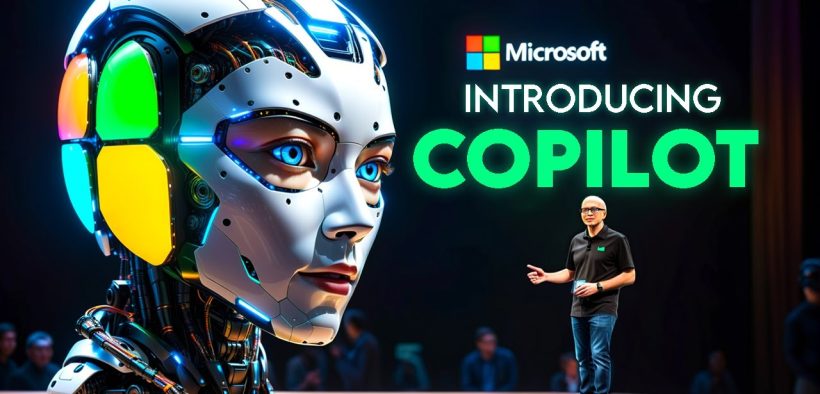The Controversy Surrounding Microsoft’s Copilot for Windows: A Missed Opportunity?
Share

Microsoft’s recent introduction of Copilot for Windows has stirred up a whirlwind of reactions across social media platforms. While some see it as a groundbreaking step towards integrating AI into everyday computing, others are labeling it as bloatware or even spyware. In this article, we’ll delve into the capabilities of Copilot for Windows, the backlash it has received, and why Microsoft might be missing a significant opportunity by scaling back its features.
Copilot’s Promising Debut
Copilot for Windows was designed to be an AI assistant integrated directly into the Windows operating system. In Windows 11, it was accessible via a dedicated shortcut (Windows Key + C), replacing the previous function tied to Cortana. Upon activation, Copilot would open as a side panel on the right-hand side of the screen, remaining visible even when other applications were maximized. This seamless integration allowed users to multitask efficiently without losing sight of the AI assistant.
One of the most exciting aspects of Copilot was its ability to interact with the system on a deeper level. Users could ask it to:
- Identify installed applications that could perform specific tasks, like resizing a JPEG image.
- List all installed applications and fetch information about them from the internet, presenting the data in an organized table.
These features hinted at a future where Copilot could access and interpret various system components like the Event Log or hardware inventory. Imagine asking:
- “I need to free up 50GB on my D drive. Which apps haven’t I used recently that I could uninstall?”
- “My Bluetooth headphones are glitchy. Has there been a recent Windows update affecting Bluetooth settings, or are there any relevant errors in the Event Log?”
The potential for Copilot to simplify complex system management tasks was immense.

The Social Media Backlash
Despite these promising features, social media platforms erupted with criticism. Users accused Copilot of being intrusive, labeling it as bloatware or even spyware. Posts on Reddit and other forums expressed concerns over privacy and data security. One particularly heated comment read:
“Just found out Copilot on Windows 11 is a [expletive] spyware.”
Such reactions seem to stem from misunderstandings about how Copilot operates. Copilot for Windows runs locally on the user’s PC, leveraging their credentials and permissions. It performs tasks that users could already execute themselves but streamlines the process through AI. There’s no evidence to suggest that Copilot is collecting or transmitting personal data without consent.
Microsoft’s Response: A Step Backward?
In what appears to be a reaction to the negative feedback, Microsoft has altered Copilot in the Windows Release Preview channel. The integrated Copilot has been replaced with a store app version, which essentially opens a web-based panel from copilot.microsoft.com. This version lacks the system-level integration that made the original Copilot so compelling. It doesn’t stay pinned on the screen, and its capabilities are significantly reduced.
This move raises concerns:
- Is Microsoft yielding to social media pressure at the expense of innovation?
- Are they planning to reserve the full-featured Copilot for devices with dedicated AI hardware?
Moreover, Microsoft has recently allowed the dedicated Copilot key to be reprogrammable, further signaling a possible retreat from their original vision. (see Copilot Key Changes – TinSlug)
The Missed Opportunity
Microsoft stands at the forefront of AI integration in consumer operating systems. By harnessing AI locally, they can offer unparalleled functionality while maintaining user privacy—a stark contrast to cloud-dependent solutions.
Here’s what Microsoft could do to turn the tide:
- Offer Opt-In Features: Allow users to enable or disable Copilot features according to their comfort level. An opt-in model could alleviate privacy concerns.
- Leverage Windows Strengths: Utilize existing Windows components like WMI, the Event Log, and Device Manager. By integrating these with Copilot, Microsoft can provide powerful tools for both casual users and IT professionals.
- Improve Communication: Microsoft needs to proactively address misconceptions. Clear, transparent communication about how Copilot works and the measures taken to protect user data is crucial.
Looking Ahead
Public apprehension often accompanies new technology, especially when it involves AI and system access. However, history shows that utility can overcome initial resistance. Take Waze, for example—a navigation app that shares user location data to provide real-time traffic updates. Despite potential privacy concerns, its usefulness led to widespread adoption and eventual acquisition by Google.
Microsoft has a unique opportunity to redefine user interaction with their PCs through AI. By addressing concerns head-on and highlighting the tangible benefits of Copilot, they can foster acceptance and even enthusiasm among users.
Conclusion
The future of AI in operating systems hangs in the balance. Microsoft’s Copilot for Windows could either revolutionize how we interact with our computers or become a footnote due to misunderstood backlash. It’s imperative for Microsoft to stay the course, refine the technology, and engage with the user community. Only then can they unlock the full potential of AI integration and perhaps change the way we use our PCs forever.


